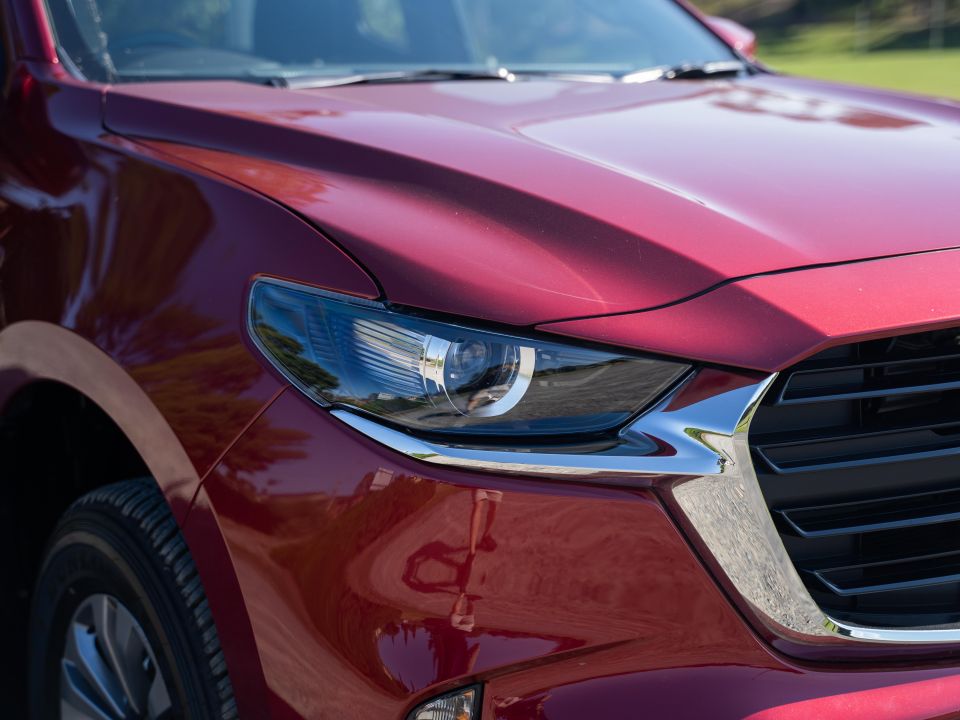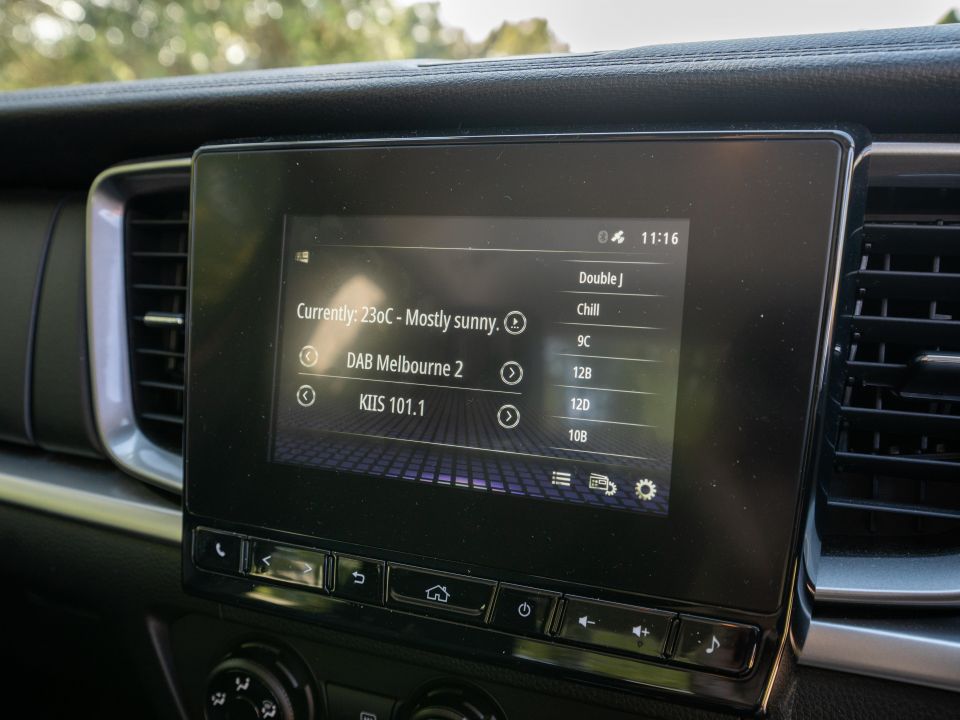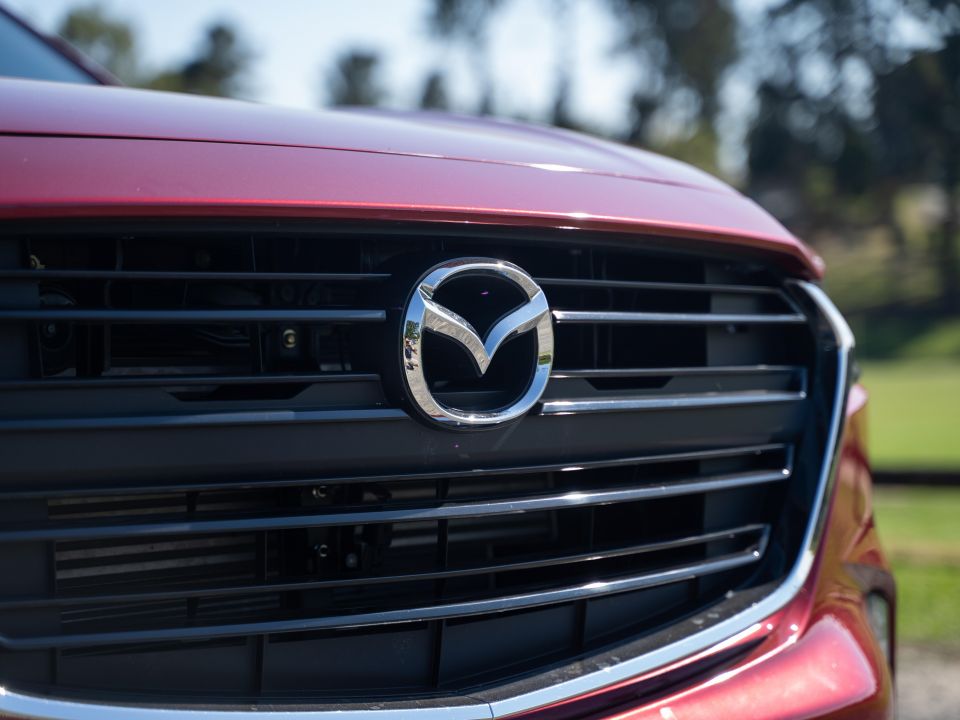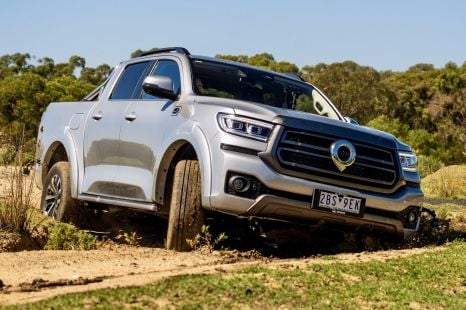

Max Davies
2025 BYD Shark 6 review
24 Days Ago
Mazda's tradie-spec BT-50 offers the strengths of the dual-cab with the added capability of a cab-chassis ute. You pay for the privilege, though



Marketplace Editor
New from
$36,550
excl. on-roads

Marketplace Editor
New from
$36,550
excl. on-roads


Marketplace Editor
New from
$36,550
excl. on-roads

Marketplace Editor
New from
$36,550
excl. on-roads
Quickly see how this car stacks up against its competition. Select any benchmark to see more details.
Where expert car reviews meet expert car buying – CarExpert gives you trusted advice, personalised service and real savings on your next new car.
The 2021 Mazda BT-50 launched with the popular dual-cab body style initially, catering to Australia’s strong demand for family-friendly utes.
Since then, the Japanese brand has rolled out more tradie-focused cab-chassis versions of its Isuzu D-Max twin, offering a lower entry point as well as new cab variants.
Here on test we have the 2021 Mazda BT-50 XT Freestyle Cab, fitted with the genuine tray – a $2300 add-on to the manufacturer’s list price.
Both rear-wheel drive and 4×4 versions are offered, as well as six-speed manual and automatic options.
So, is Mazda’s tech-laden utility a viable option for those needing a proper workhorse?
The Mazda BT-50 Single Cab and Freestyle Cab were released separately to the dual-cab range, and are available solely in the base XT trim level.
Pricing is as follows:
All prices exclude on-road costs

Here on test we have the BT-50 Freestyle Cab 4×4 with a six-speed automatic, meaning the vehicle on test is $47,550 before on-roads (no tray), or $51,447 drive-away with a standard tray for a private Victorian buyer – the ‘standard alloy tray’ seen here is $2300.
It’s certainly not ‘cheap’ for a tradie-spec cab-chassis ute, but as you’ll find in the next section the BT-50 XT Freestyle Cab wants for little in terms of kit. ABN holders get the exclusive offer of $48,490 drive-away at the time of publish.
Additionally, the mechanically-identical Isuzu D-Max can be had in similar specification (SX 4×4 Space Cab Chassis auto) for $53,734 drive-away (based on a Melbourne postcode) and also lacks stuff like LED headlights and alloy wheels like you get here on the Mazda.
Key competitors include the Ford Ranger XL 4×4 Super Cab Chassis, which retails for $49,790 with the 3.2-litre diesel and six-speed automatic, while the Toyota HiLux SR Extra Cab 4×4 is $48,250 with the six-speed auto.


Buy your new car without the stress. It's fast, simple and completely free.

Great service from Travis and team, second time I have used this business would not hesitate to recommend them to anyone
Craig C.
Purchased a Ford Ranger in Sunshine Coast, QLD
CarExpert helped Craig save $7,224 on his Ford Ranger, now let us save you on your next new car.
Get your BEST priceStandard equipment on the Mazda BT-50 XT includes:

All versions are also decked out with a full suite of active safety and assistance systems, including AEB with pedestrian and cyclist detection, adaptive cruise control, blind-spot monitoring with rear cross-traffic alert, lane departure warning with lane-keep assist, and auto high-beam. More on safety in a bit.
Like the D-Max, the BT-50 offsets its higher starting price over other entry-level utes by covering all the basics and then some.
Gone are the days when commercial vehicles are hugely under-specified in terms of creature comforts and safety.

The Mazda BT-50 wears a five-star ANCAP safety rating with 2020 date stamp, based on tests conducted on the related Isuzu D-Max. This rating applies to all variants bar the recently-launched BT-50 Thunder.
Against 2020 criteria, category scores included 83 per cent for adult occupant protection, 89 per cent for child occupant protection, 67 per cent for vulnerable road user protection and 84 per cent for safety assist.
It’s worth noting the BT-50’s unique front end compared to its Isuzu twin garnered a slightly weaker pedestrian protection score (from 69 per cent).

All Mazda BT-50 models come standard with autonomous emergency braking, blind-spot monitoring, lane-departure warning, rear cross-traffic alert, turn assist, driver attention monitoring and anti-lock brakes.
Automatic models also feature lane-keeping assist and adaptive cruise control.
There are also front, side and curtain airbags, plus a driver’s knee airbag and a front-centre airbag.

The BT-50 XT’s cabin scrubs up alright for what is an (expensive) tradie-spec ute.
Yes the steering wheel and shifter are plastic, but the rest of the cabin is up to scratch with the higher XTR and GT grades offered on the dual-cab body style.
The cloth-trimmed seats are super comfortable and moulded to caress you without being too body-hugging, the 7.0-inch touchscreen with wireless Apple CarPlay is one of the nicer displays in the segment and reliably connects to smartphone mirroring wirelessly, while the display in the cluster shows the same information and menus as higher-grade models.
The air-conditioning is manual, while the infotainment system is at its best with smartphone mirroring enabled. Isuzu’s native interface is a little slow and not as good as the system offered on Mazda passenger cars, let alone what’s offered by the Ford Ranger and Volkswagen Amarok.




It’s worth noting there’s only a two-speaker sound system compared to the eight-speaker setup on high-spec dual-cab models, or even the four-speaker system on the XT pickup dual-cab.
Build quality is up there with the best, with a mix of padded and hard-wearing surfaces that provide a more premium ambience than most competitors without sacrificing durability.
Despite having a small set of rear doors (sort of suicide-door style), there’s no seats back there, rather an area where you have a bit more storage in the cabin for larger items you want covered. The rear doors also have pop-out windows.
There’s a good amount of storage throughout the cabin, including a cubby under the centre stack for your phone, a dual glovebox ahead of the passenger, a cubby under the front centre armrest, a set of cupholders along the centre tunnel, and shallow door bins with bottle holders.




There’s a range of trays and accessories available from Mazda Australia, with the vehicle on test being fitted with the standard alloy tray ($2300).
Dimensions for the accessory as tested are as follows:
Mazda also quotes the following features on its website for the standard alloy tray:

All Mazda BT-50 variants are powered by a 3.0-litre four-cylinder turbo-diesel sourced from its Isuzu D-Max platform mate. Outputs are rated at 140kW (3600rpm) and 450Nm (1600-2600rpm).
The diesel is closely related to Isuzu’s truck engine, known for its long-term reliability.
Drive in our tester is sent through a selectable 4×4 system that defaults to rear-wheel drive, through the optional six-speed automatic. A six-speed manual is the standard shifter.

Four-wheel drive models feature switchable 2H, 4H, and 4L options plus a locking rear differential.
Automatic 4×4 versions of the BT-50 use a claimed 8.0L/100km on the combined cycle. We saw an indicated 9.2L/100km over 380km of mixed driving.
The BT-50 has a quoted braked towing capacity of 3500 kilograms, with a tow ball download maximum of 350kg. Maximum payload is rated at 1120kg with the Mazda standard alloy tray (as tested), with GVM and GCM quoted at 3000kg and 5850kg respectively.
Axle capacities front and rear are listed as 1450kg and 1910kg respectively.

As a Freestyle Cab Chassis, the BT-50 drives more or less the same as other variants, though the heavy-duty rear is a little stiffer when unladen.
Performance from the 3.0-litre diesel is strong and relatively refined, with the six-speed auto on test shifting smoothly and decisively.
The steering is pretty light and at times can feel a touch vague, but that’s also not uncommon for a segment requiring a degree of off-road capability. At least there’s a range of driver assist systems to keep you on the straight and narrow.
Most utes are a touch fidgety with noting in the tub or tray, so we can’t really knock the BT-50 Freestyle Cab for its stiffer rear given the 1.1-tonne payload. We can say, however, with some weight in the tray it improves significantly.

We stuck 650kg in the back and drove on some urban roads, 80km/h highways as well as the freeway, and it was a welcome change from the unsettled unladed ride. It almost felt SUV-like.
That said, the BT-50 (and the related D-Max) will need a few minutes after loading heavy weights in the tray for the camera-based assist systems (AEB, lane-keep etc.) to recalibrate as the added weight throws off the sensors. Apparently within a few minutes you should be right to go.
It happened to us during this laden test, and without leaving the car running for a moment straight after loading the weights, the BT-50 took about five minutes for the warning in the instrument cluster to flick off and for the systems to come back online.
Given most buyers of a vehicle like this will have toolboxes and other heavy work items almost always in the back, the improvements to the ride are welcome and the camera sensor stuff shouldn’t be a regular issue.

Where expert car reviews meet expert car buying – CarExpert gives you trusted advice, personalised service and real savings on your next new car.
On the move the BT-50 is stable, refined and comfortable, much like its D-Max twin.
Mazda has said previously the BT-50 doesn’t feature any changes to the mechanicals or suspension compared to the D-Max, so the characteristics are largely the same as the equivalent Isuzu.
The extensive suite of driver assistance systems really is a point of difference in the segment, with only Ford and Toyota coming close in terms of active safety inclusions – though the BT-50 and D-Max are top of the class in this regard.
Adaptive cruise control and active lane-keep assist are handy inclusions for extended freeway stints, while blind-spot monitoring and rear cross-traffic alert are rare inclusions for cab-chassis models – it’s also why you see that big red panel under the tray on our tester, it houses the radars for these systems.
For those who are planning to make use of the BT-50’s 3.5-tonne braked towing capacity, there’s also trailer sway control which uses torque vectoring via braking to minimise trailers swaying side to side on the move.

The Mazda BT-50 is covered by the brand’s five-year, unlimited-kilometre warranty with roadside assistance for the same period.
Servicing is required every 12 months or 15,000 kilometres, whichever comes first.
Mazda lists the base pricing for the first seven services on its website, covering up to the first 105,000km.
They’ll cost $421, $393, $679, $500, $314, $758 and $437 – totalling $3502 for that period.
The only additional items listed are fuel filters, which add $88 when required (interval not specified).

Buy your new car without the stress. It's fast, simple and completely free.

Great service from Travis and team, second time I have used this business would not hesitate to recommend them to anyone
Craig C.
Purchased a Ford Ranger in Sunshine Coast, QLD
CarExpert helped Craig save $7,224 on his Ford Ranger, now let us save you on your next new car.
Get your BEST priceWhile it’s far from cheap, the tradie-spec Mazda BT-50 proves a workhorse can still be comfortable, refined and safe.
It’s good to see the commercial vehicle segments really picking up in these areas given they’re some of the most used vehicles on our roads, and owners will likely spend hours and hours behind the wheel.
There’s no escaping it’s expensive, though. Considering the Ford Ranger and Toyota HiLux both offer circa-$30,000 tradie-spec models with large touchscreens, AEB, and similar towing/payload capablities the Mazda is definitely positioned as a more premium product.
Objectively, this is a great work vehicle that covers the basics and then some, but you pay for the privilege.

Click here for the full gallery by Wesley Loh (@garagetribe on Instagram)
Where expert car reviews meet expert car buying – CarExpert gives you trusted advice, personalised service and real savings on your next new car.
James Wong is an automotive journalist and former PR consultant, recognised among Australia’s most prolific motoring writers.


Max Davies
24 Days Ago


Josh Nevett
16 Days Ago


William Stopford
14 Days Ago


Max Davies
10 Days Ago


James Wong
8 Days Ago


Max Davies
8 Days Ago